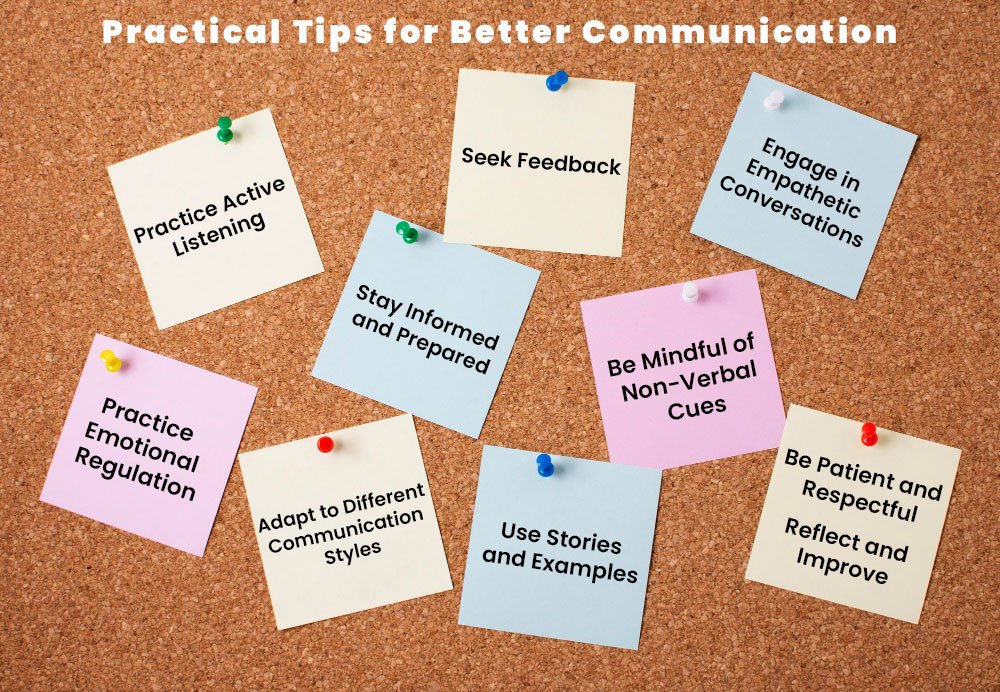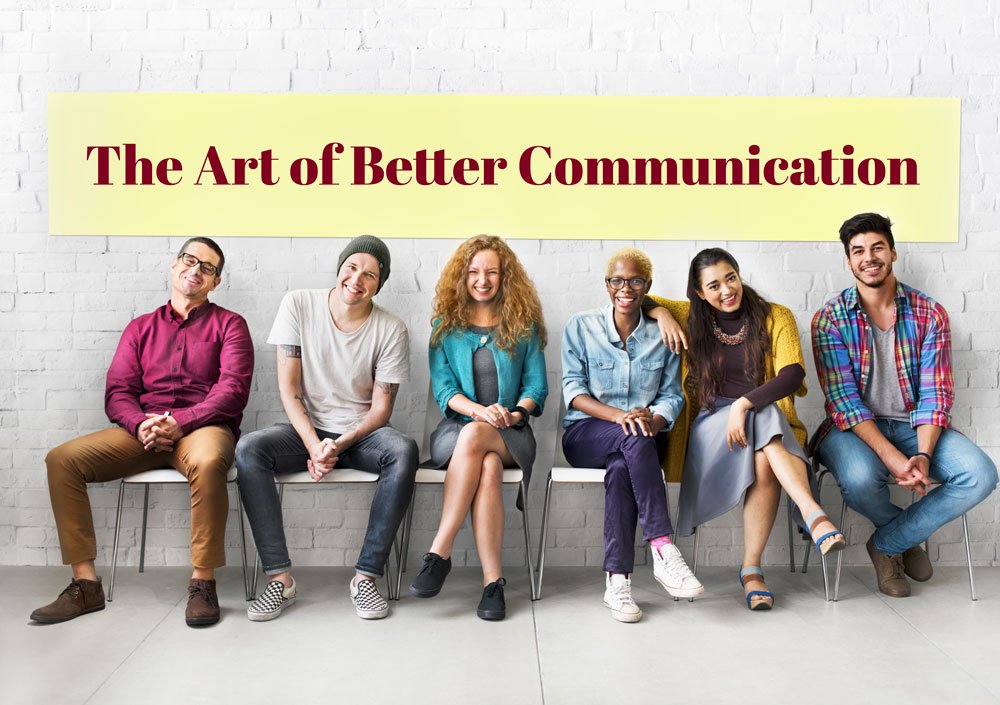Communication is the lifeblood of any relationship, be it personal or professional. The ability to convey thoughts, ideas, and feelings effectively can make the difference between a thriving relationship and a faltering one. At the heart of effective communication lies one essential skill: listening. While speaking clearly and persuasively is important, being a successful communicator hinges significantly on the ability to listen, understand, and appreciate others’ points of view. This article delves into the art of better communication, emphasizing the pivotal role of listening, mastering the subject matter, and paying attention to the mood of the audience.
The Importance of Listening
Listening is often undervalued in communication, overshadowed by the more overt skill of speaking. However, true communication is a two-way process, and listening is the foundation upon which it is built. Effective listening involves not just hearing the words spoken but also understanding the emotions and intentions behind them.
- Active Listening: Active listening is an engaged form of listening that requires the listener to fully concentrate, understand, respond, and remember what is being said. It involves giving full attention to the speaker, making eye contact, nodding, and providing feedback. This not only shows respect for the speaker but also helps in accurately comprehending the message.
- Empathy: Empathetic listening goes a step further by putting oneself in the speaker’s shoes. It involves understanding the speaker’s emotions and perspectives, which fosters trust and openness. Empathy in listening can transform a superficial conversation into a meaningful exchange, where both parties feel valued and understood.
- Avoiding Interruptions: Interrupting the speaker can disrupt the flow of communication and can be perceived as disrespectful. It’s essential to allow the speaker to finish their thoughts before responding. This shows that you value their input and are genuinely interested in what they have to say.
- Reflective Listening: Reflective listening involves paraphrasing or summarizing what the speaker has said to confirm understanding. Phrases like “What I’m hearing is…” or “It sounds like you are saying…” can clarify and validate the speaker’s message, ensuring both parties are on the same page.
Appreciating Others’ Points of View
To communicate effectively, it’s crucial to appreciate and respect different perspectives. This requires an open mind and a willingness to consider viewpoints that may differ from your own.
- Open-Mindedness: Enter conversations with an open mind, ready to learn and understand rather than to judge or impose your own views. This attitude fosters a more collaborative and less confrontational interaction.
- Cultural Sensitivity: In our increasingly globalized world, cultural sensitivity is key to understanding different communication styles and perspectives. Being aware of and respecting cultural differences can prevent misunderstandings and promote more inclusive and effective communication.
- Avoiding Assumptions: Making assumptions about the speaker’s thoughts or feelings can lead to miscommunication. Instead, ask clarifying questions and seek to understand their point of view without jumping to conclusions.
- Validation: Acknowledge the speaker’s perspective even if you disagree. Phrases like “I understand how you feel” or “That makes sense” validate the speaker’s experience and foster a positive communication environment.
Mastering the Subject Matter
A successful communicator has a firm grasp of the subject matter being discussed. This not only builds credibility but also ensures the message is clear and accurate.
- Preparation: Before engaging in any significant conversation or presentation, thoroughly prepare and understand the topic. This allows you to speak confidently and answer questions effectively.
- Clarity and Conciseness: Communicate your ideas clearly and concisely. Avoid jargon and overly complex language that can confuse the listener. Clear communication ensures that your message is easily understood and retained.
- Organized Thought Process: Present your ideas in a logical sequence. An organized thought process helps the listener follow along and grasp the key points without getting lost.
- Feedback and Adaptation: Be open to feedback and ready to adapt your message based on the listener’s response. Flexibility in communication can help you address misunderstandings and tailor your message to the audience’s needs.
Paying Attention to the Mood of the Audience
The mood and emotional state of your audience significantly influence how your message is received. Being attuned to these cues can help you adjust your communication style for better effectiveness.
- Emotional Intelligence: Develop emotional intelligence to recognize and understand the emotions of your audience. This involves being aware of non-verbal cues such as body language, facial expressions, and tone of voice.
- Adaptability: Adjust your communication style based on the mood of the audience. If the audience appears disinterested or confused, you might need to change your approach, simplify your message, or engage them with questions.
- Building Rapport: Establish a connection with your audience by showing genuine interest and empathy. This can create a more receptive environment for your message.
- Timing and Sensitivity: Be mindful of the timing and context of your communication. Delivering a message when the audience is distracted or stressed can diminish its impact. Choose an appropriate moment and manner to convey your ideas.

Practical Tips for Better Communication
Combining these elements into your communication practices can significantly enhance your ability to connect and convey your message effectively. Here are some practical tips:
- Practice Active Listening: Regularly practice active listening in your daily interactions. Focus on the speaker, avoid distractions, and respond thoughtfully.
- Seek Feedback: Ask for feedback on your communication skills from trusted friends, colleagues, or mentors. Constructive criticism can provide valuable insights and areas for improvement.
- Engage in Empathetic Conversations: Make a conscious effort to understand others’ perspectives. Engage in conversations with the intent to learn and empathize rather than to argue or persuade.
- Stay Informed and Prepared: Keep yourself informed about topics relevant to your field or interests. Being well-prepared allows you to communicate with confidence and authority.
- Be Mindful of Non-Verbal Cues: Pay attention to your own body language and non-verbal signals as well as those of your audience. Non-verbal communication can reinforce or contradict your verbal message.
- Practice Emotional Regulation: Learn to manage your emotions during conversations, especially in conflict situations. Staying calm and composed can help maintain a constructive dialogue.
- Adapt to Different Communication Styles: Recognize that people have different communication styles and preferences. Adapt your approach to suit the individual or group you are interacting with.
- Use Stories and Examples: Illustrate your points with stories or examples. This makes your message more relatable and memorable.
- Be Patient and Respectful: Give others the time they need to express themselves. Patience and respect create a safe space for open communication.
- Reflect and Improve: After significant conversations or presentations, take time to reflect on what went well and what could be improved. Continuous self-reflection helps in honing your communication skills.
Conclusion
Effective communication is an art that requires continuous practice and refinement. At its core, it revolves around listening—truly listening to understand rather than to respond. Appreciating others’ perspectives, mastering the subject matter, and being attuned to the audience’s mood are crucial components of this art. By incorporating these elements and practical tips into your communication practices, you can build stronger, healthier relationships both personally and professionally. Communication is not just about speaking; it’s about connecting, understanding, and building bridges between individuals. Embrace the art of better communication, and you will find yourself navigating through interactions with more ease and effectiveness, fostering deeper connections and mutual respect.










